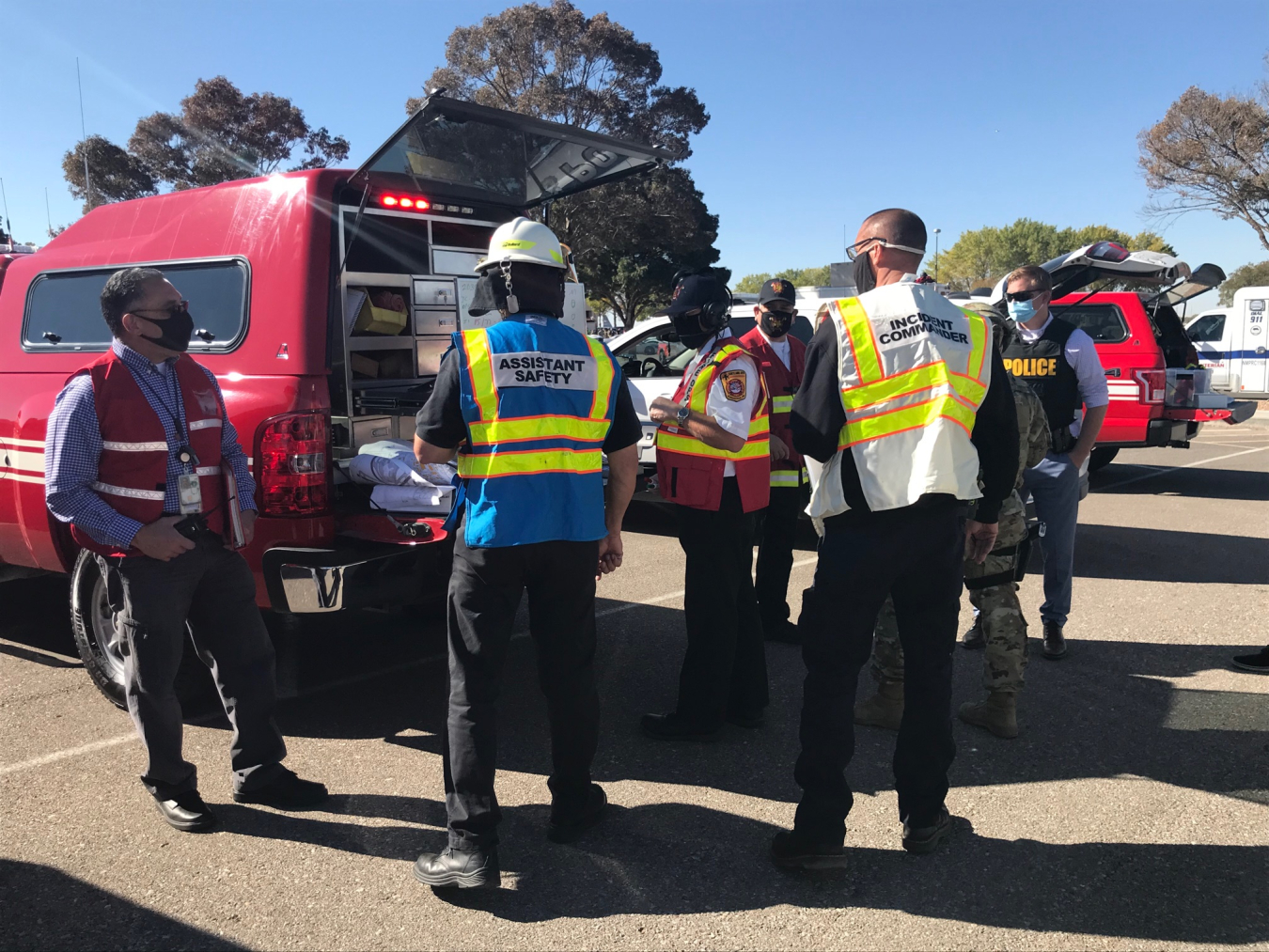NNSA's Albuquerque Complex, located on Kirtland Air Force Base in Albuquerque, New Mexico, hosted of a simulated “active shooter” exercise.
National Nuclear Security Administration
November 25, 2020The NNSA Albuquerque Complex, located on Kirtland Air Force Base (KAFB), was the host of a simulated “active shooter” exercise during the Global Thunder exercise on Oct. 21. It was the first joint exercise of this type at the NNSA site.
Global Thunder is a worldwide exercise conducted by the U.S. Air Force that provides training for all U.S. Strategic Command’s mission areas, tests joint and field training operations, and includes a focus on nuclear readiness. The exercise also tests the readiness of responders. The simulated active shooter drill at the Albuquerque Complex was part of the week-long Global Thunder 2020 exercise at KAFB.
“Our objective at the NNSA Albuquerque Complex was to evaluate the response of our on-site protective forces and their ability to effectively communicate and integrate with the Air Force security police and emergency responders,” said Russell Barnes, lead security specialist for the Complex Management Team. “The lessons learned from our participation in the exercise will help us make improvements to our security program.”
Protective forces are an integral part of a site’s security posture and receive specialized training on tactics and procedures necessary to protect a sites assets and employees. During the exercise, the protective forces at the NNSA Albuquerque Complex locked down all access points and facilitated entry into the area by law enforcement.
The active shooter scenario included a full coordinated response. The KAFB Emergency Operations Center was responsible for communication and coordination of the 377th Security Forces and medical responders. An incident command center was established quickly after the exercise got underway, which included the KAFB Fire Department, the 377th Air Base Wing Inspector General’s Office and FBI.
During the exercise, employees working on-site who were not playing a role in the drill were asked to consider how they would respond to an actual active shooter event.

“We wanted employees to think through the scenario and consider what protective action they would take … ‘run, hide or fight,’” said Timothy Oswald, deputy director for the Complex Management Team. “We also want employees to be able to recognize potential workplace violence indicators in hope of preventing an active shooter situation. We have a training course that we plan to make mandatory for all employees on-site so to better prepare them should they ever have to respond in an active shooter situation.
Planning and preparation are key elements of NNSA security program operations. All NNSA sites are required to develop robust physical security plans, conduct vulnerability and risk assessments, and perform testing to ensure that the NNSA’s security mission can be effectively and efficiently executed.
For more information about NNSA’s multiple layers of security including protective force and physical security, visit NNSA’s Office of Defense Nuclear Security.

